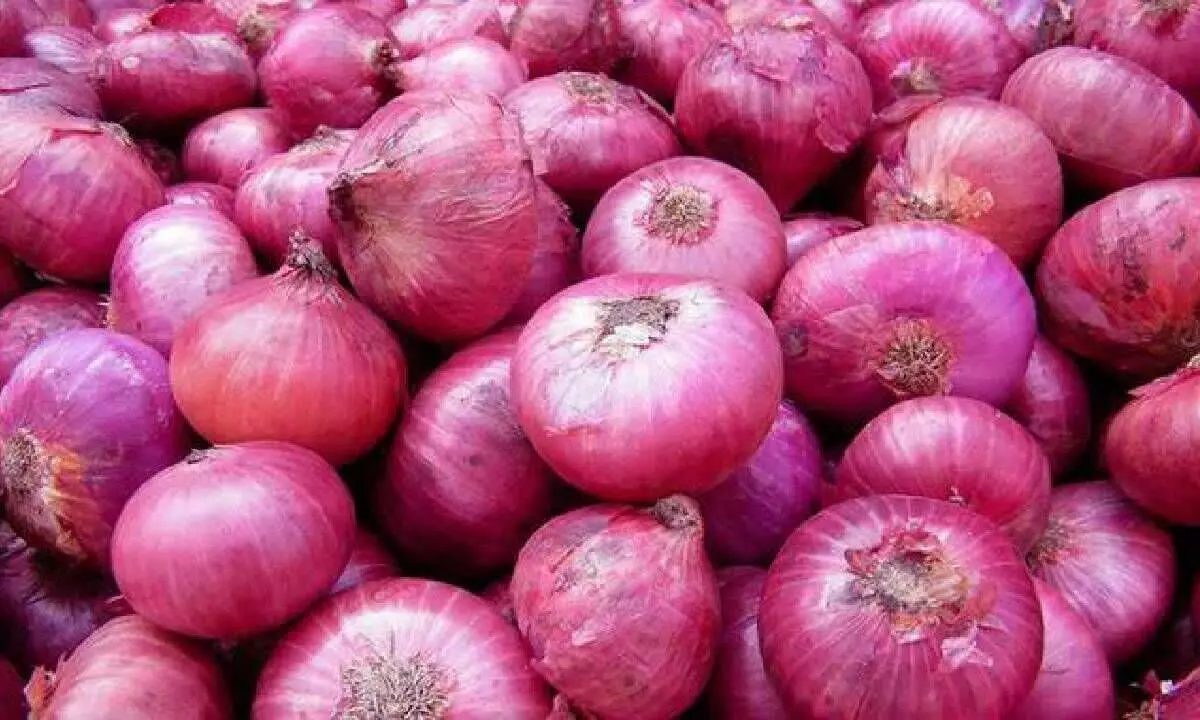India should focus on export of onions to become a global powerhouse
Price Stabilization Fund set up for procurement and storage of onion as buffer
image for illustrative purpose

Beating past records, the Centre has procured 2.50 lakh tons of onion for the buffer in 2022-23. The onion buffer size in the current year is 0.50 lakh tons, much higher than the two lakh tons created during 2021-22. The onions were procured from current rabi harvest for the price stabilisation buffer.
Open market releases will be targeted towards states/cities where prices are increasing over the previous month and also in key mandis to augment the overall availability.
The price stabilisation buffer serves the twin objectives of providing remunerative prices to onion farmers and augmenting the availability of onions at affordable prices to the consumers. Rabi onion harvested during April - June accounts for 65% of the country’s onion production and meets the consumer’s demand till kharif crop is harvested from October-November.
It is therefore vital to successfully store onion in order ensure the regular supply. In fiscal year 2023, the volume of onion production is estimated to have amounted to little over 31 million metric tons.
The estimated production during 2022-23 is around 318 LMT, surpassing last year’s 316.98 LMT. Prices remained stable due to consistency in demand and supplies as well as the export potential. However, February saw decline in prices of red onion, particularly in Maharashtra, where the modal rate dropped to Rs.500 -700/qtl.
Experts attribute this to overall increase in production in other States, reducing the dependence on supplies from India’s major producing district Nashik. Onion is sown in all States, but Maharashtra is the leading producer with a share of around 43%, followed by Madhya Pradesh 16%, Karnataka and Gujarat at nine per cent each of national production. It is harvested thrice a year, with cropping seasons reported during kharif, late kharif and rabi. The rabi harvest is most important as it contributes nearly 72 -75% of the national production and is harvested during March to May. The shelf life of Rabi harvest is also the highest and store-worthy whereas the kharif and late kharif crop is for direct consumption and is not store-worthy. The timing of the harvest of onion across the country provides regular supply of fresh/stored onion all over the year. But sometimes due to the vagaries of weather, either the stored onion is spoilt or the sown area gets damaged leading to supply constraints and rise in domestic prices.
To address such challenges, the Union Government has set up the Price Stabilization Fund for procurement and storage of onion as buffer to keep the supply chain smooth during the lean seasons.
Storage of onion is quite challenging as a majority of the stock is stored in the open ventilated structures (chawl) in the open fields, which has its own challenges. Therefore, there is need of scientific cold chain storage, which is under trial for the longer shelf life of onions.
The success of such modals will help in avoiding such kind of price jerks as witnessed recently. Market watchers also suggest consistency in export policy, as the same will ensure better export market for the Indian onion.
India grows 30 million tonnes of onions. It is the second largest producer behind China. An Indian household eats five kg of onion in a month adding up to an annual domestic consumption of 15 million tonnes. Onion accounts for 13% of an average Indian family’s vegetable bill.
With ample annual production of 30 million tonnes, a large, predictable and growing domestic demand at 15 million tonnes, onion should be a happy story for both farmers and consumers. With production twice the domestic consumption, India should be exporting its surplus and emerge as a global powerhouse.
India grows two types of onions: the red, which has a shelf life of two weeks and pink, the bigger crop, with a shelf life of nearly six months.
The anger over high onion prices contributed to Delhi’s chief minister Sushma Swaraj losing the Assembly election in 1998. The party hasn’t regained power in Delhi since then. “It costs us about Rs 12-15/kg to grow onions. The cost of labour, transportation, inputs like seeds, fertilisers and pesticides keep rising. There is a lot of weather-related and post-harvest loss. If I harvest 200 quintals from an acre, I only have 135-150 quintals when I sell in the market after wastage and moisture loss. To make a small profit, a farmer needs to be able to sell for at least Rs 20 per kg,” said a farmer, speaking for all onion farmers in the country.

